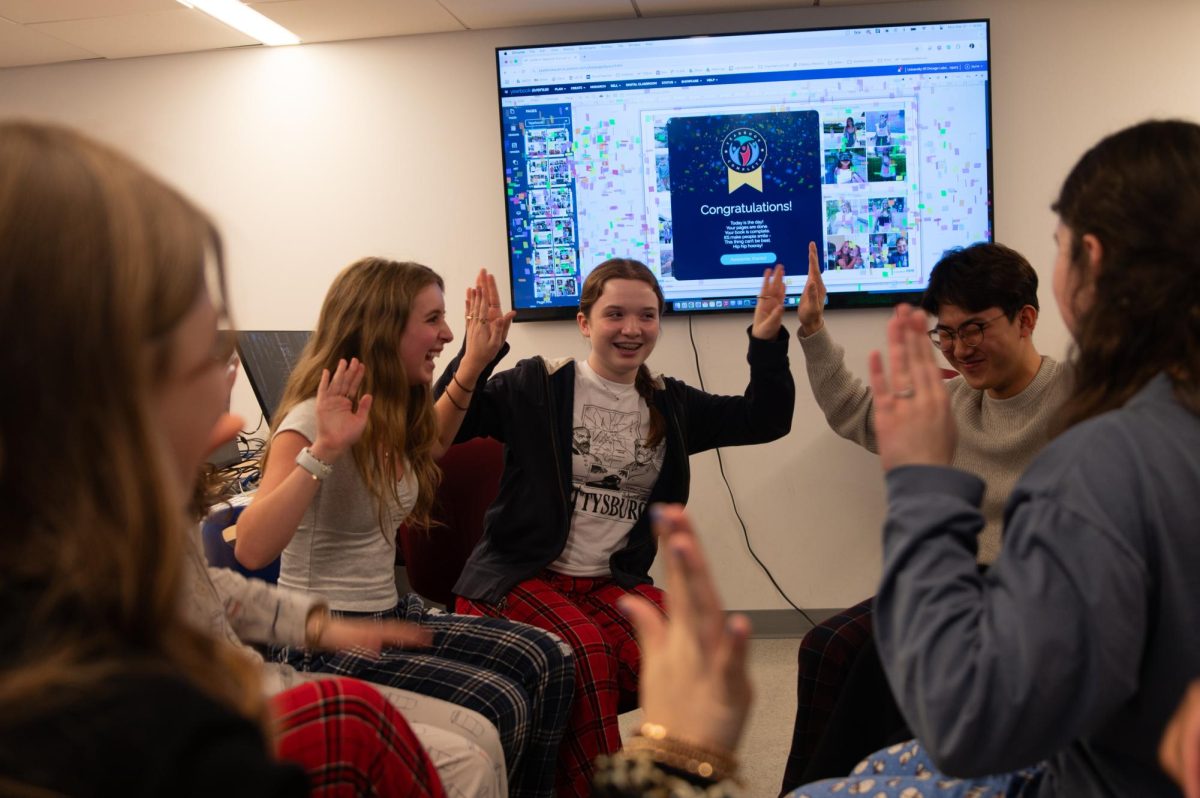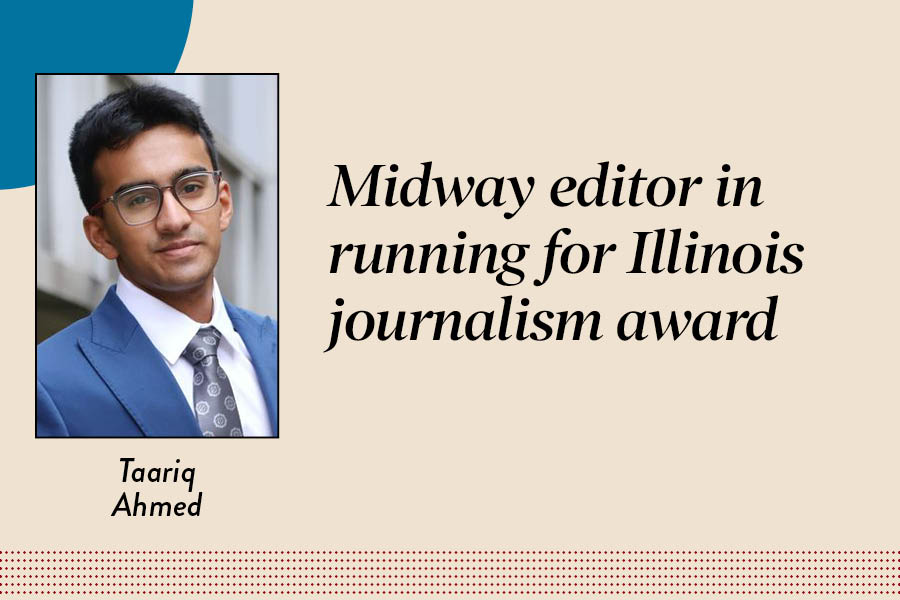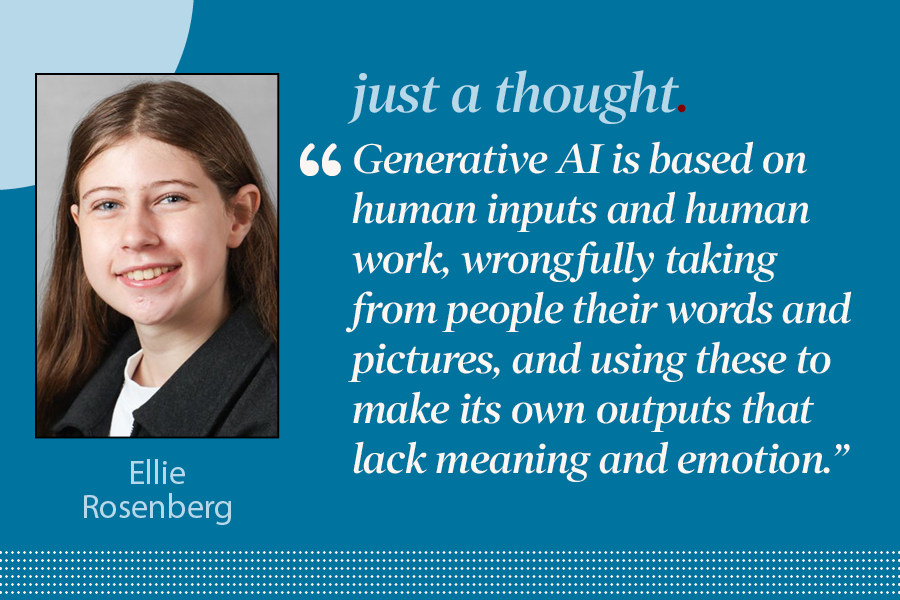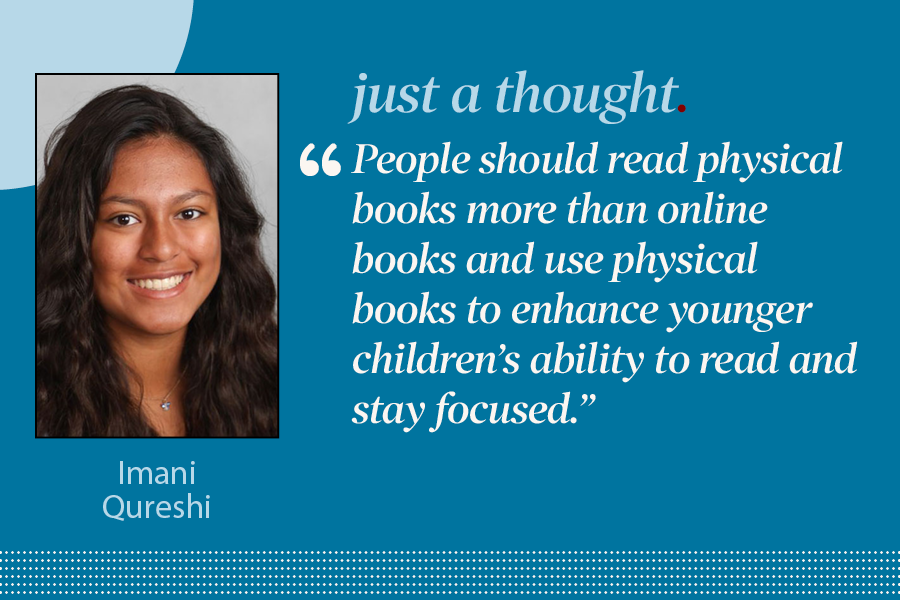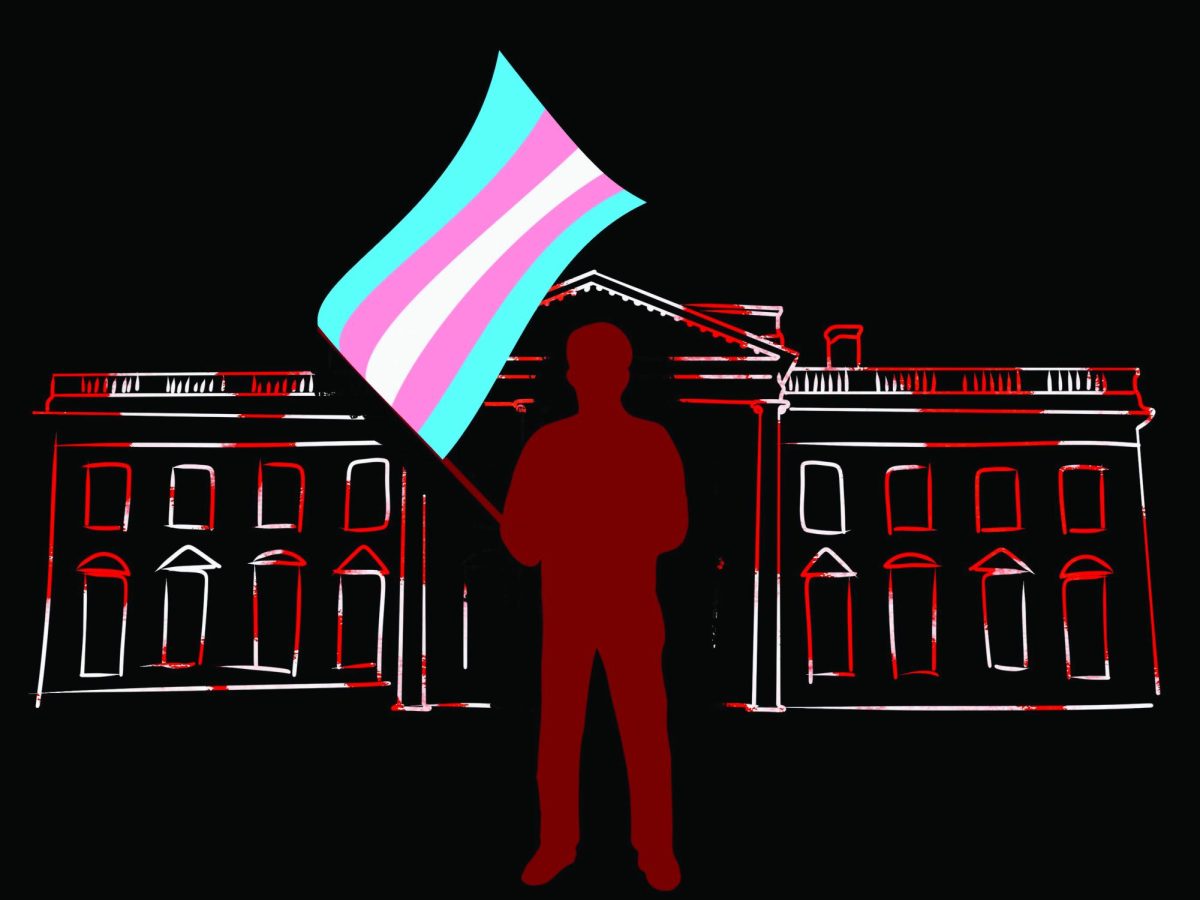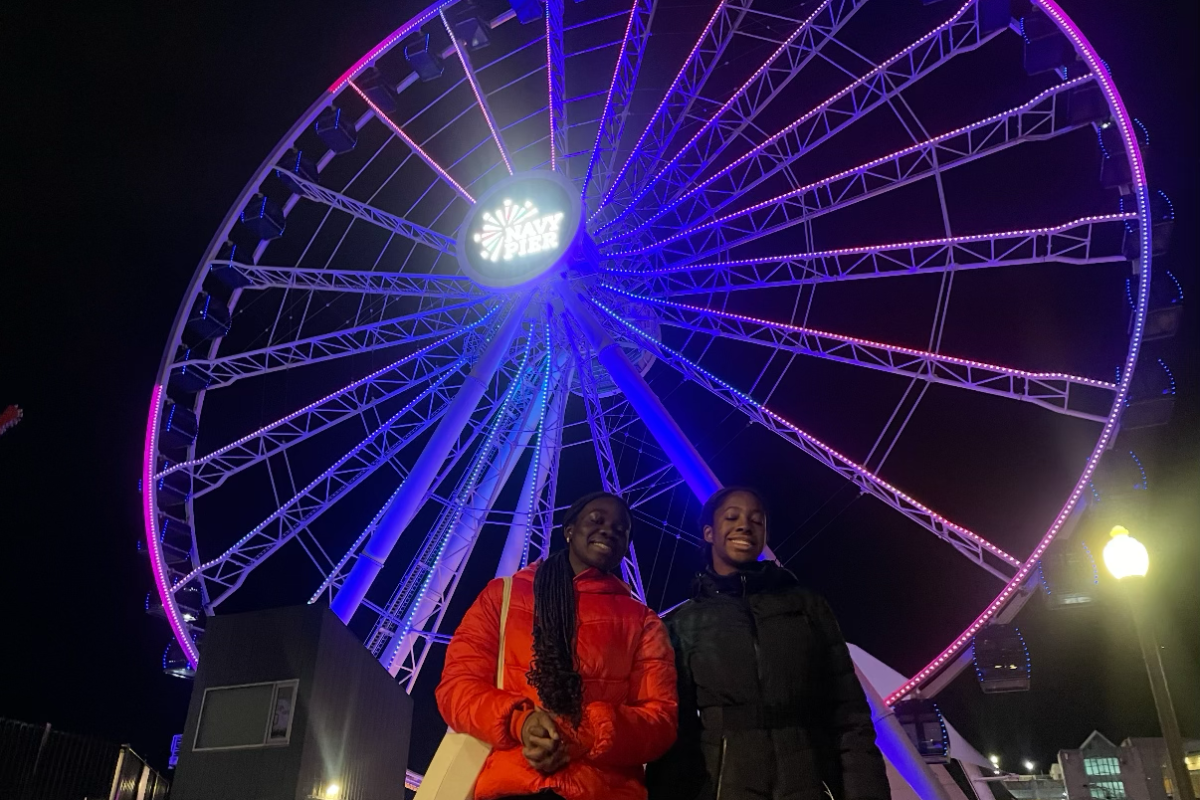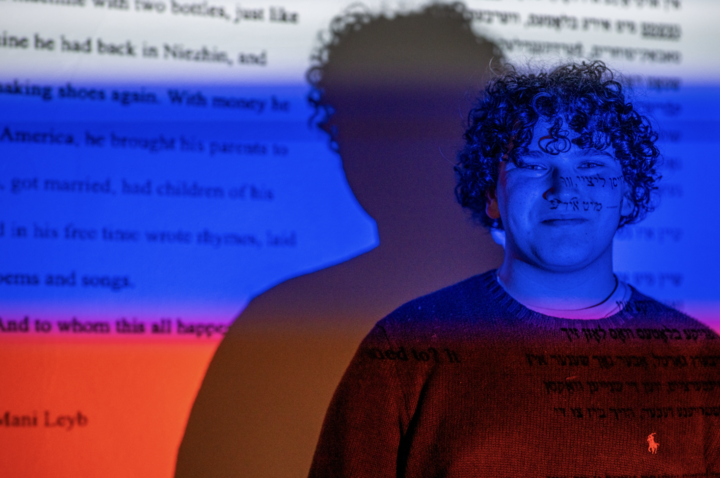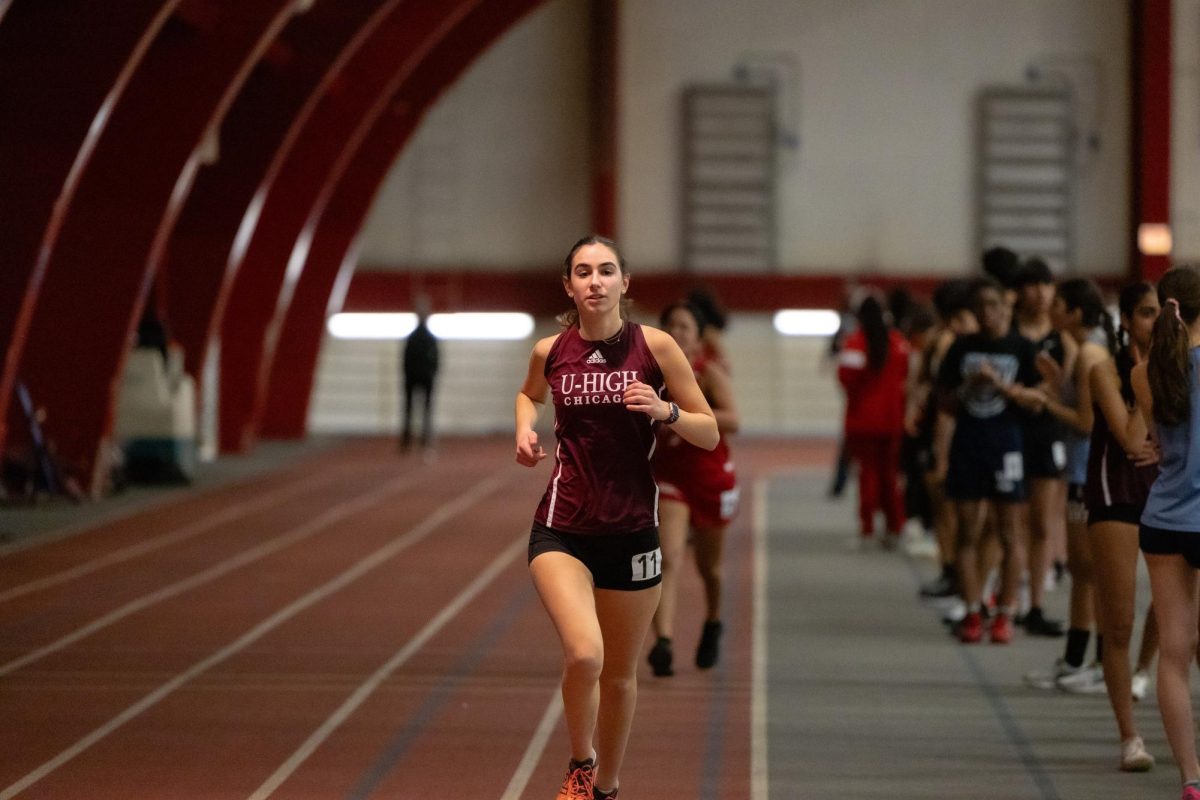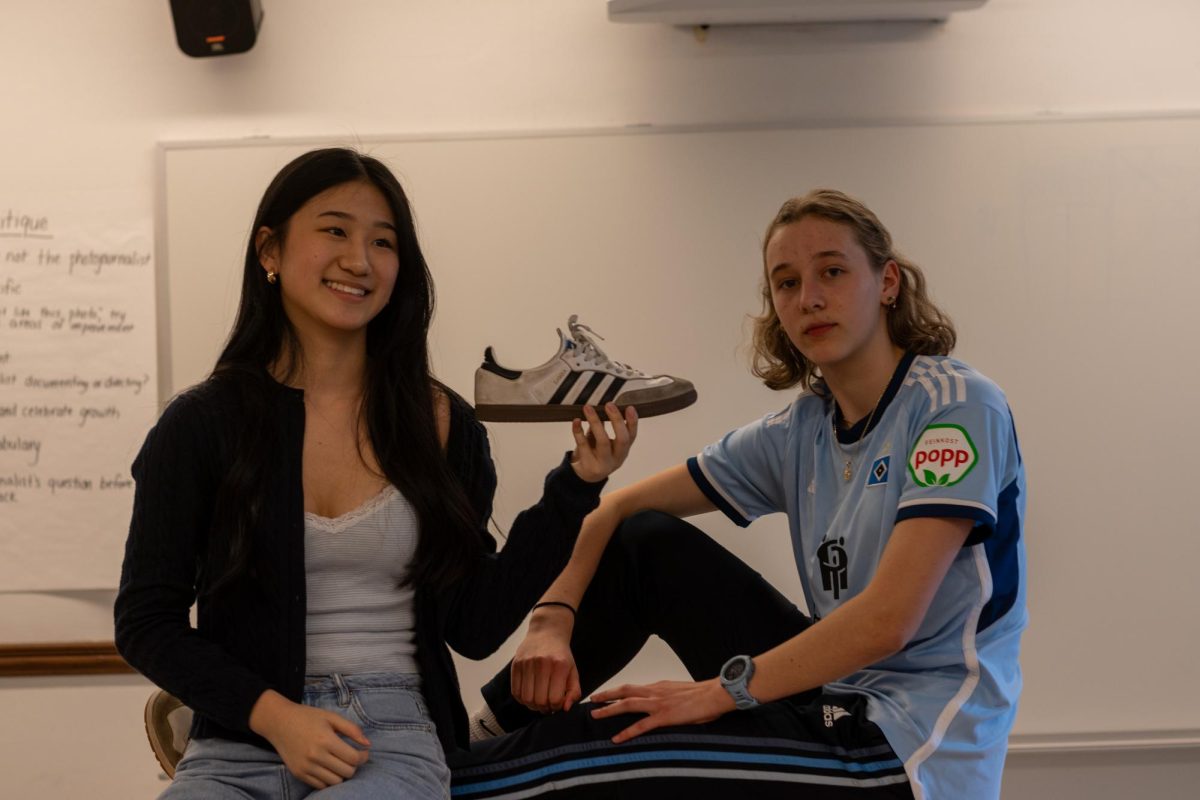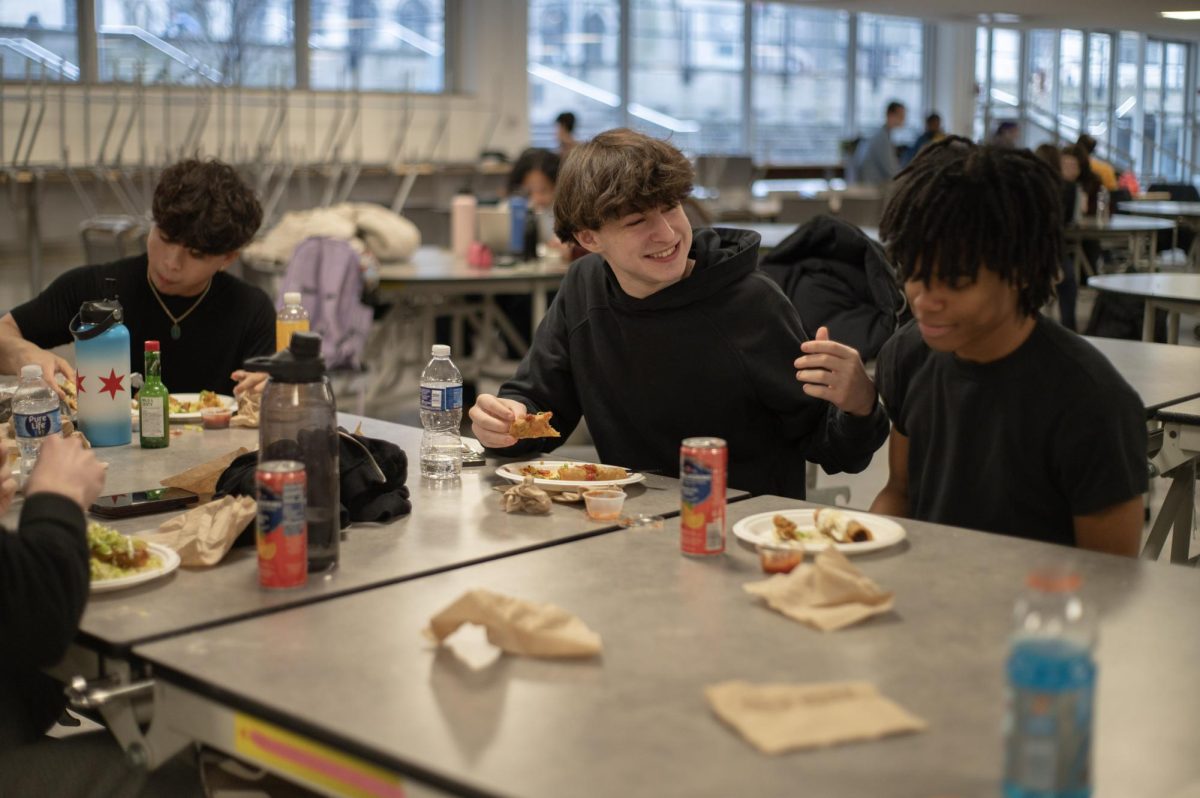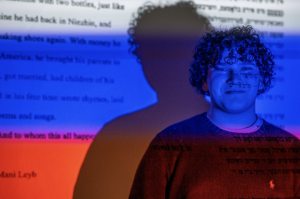Intersection
Hyde Park’s underpass murals spark conversations, community pride as art meets neighborhood history
April 19, 2018
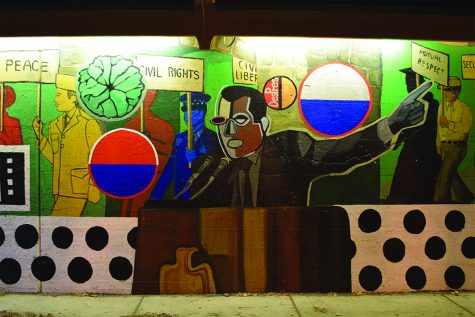
WRITINGS ON THE WALL. Under the 57th Street underpass, “The Spirit of Hyde Park” (above), was painted in 1973 by muralist Astrid Fuller. Funded by the University of Chicago, Fuller worked with Chicago artist Bernard Williams in 2010 on the restoration and renewal of the mural. The mural depicts the intricacies of Hyde Park’s history: racism, the fight for civil rights, the unrest of urban renewal, poverty.
Among the daily hustle of the windy city, under loud, fast-moving trains connecting Hyde Park to all areas of Chicago, collections of colors harmoniously intertwine. Depicting civil rights messages, portraits of Chicago’s history and community members leaning on each other for support, the mixture of colors creates detailed art that represents and connects the vast, vibrant Hyde Park community.
Greater than simply beautification, the murals scattered throughout Hyde Park are a representation of the city’s history and the neighborhood’s community.
The Community Mural Movement began in Chicago in the 20th century. Using murals as tools to educate and unite communities, artists designed murals to start conversations through art around issues going on in the 1960s and ‘70s in the Hyde Park area and throughout Chicago, said Nika Levando, associate director of the University of Chicago Office of Civic Engagement, OCE.
“Murals and public art in general have the capacity to start a conversation in places and perhaps around topics that can’t be easily accessed, but art provides you with the opportunity and the tool to do that,” Levando said.
Working in partnership with numerous organizations and nonprofits, the OCE has helped with the restoration of the neighborhood’s murals with a focus on encouraging participation from students and community members.
Kim Grimshaw Bolton, OCE’s associate director of communications, said you feel a sense of ownership when you help put the paintbrush to the wall.
She said, “You can walk by that mural and not just admire how beautiful it is but feel this sense of pride and ‘I helped to make that because this community matters to me.’ It’s a small thing but it’s also a really significant thing.”
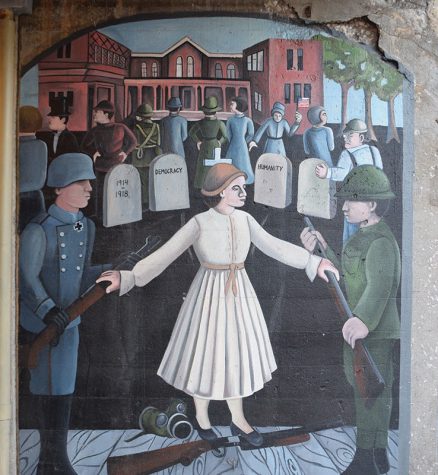
WRITINGS ON THE WALL. Depicted under the same underpass, Fuller’s “Pioneer Social Workers” (right) was painted in 1977 and restored with help from the university in 2011 by Damon Reed and Max Sansing. The mural commemorates the work of Chicago’s Jane Addams, who is considered the mother of activism and social work.
Art in the public realm triggers a sense of community, citizenship and public ownership, Levando said. It helps people feel like they are a part of something bigger than themselves. Levando said that she has seen the most student engagement and development when they understand contextually what it means to be living in Chicago and in Hyde Park.
“As one of my colleagues says, ‘You are now a Southsider.’ So get to know your community, understand where you are, embrace it, learn there’s so much to learn from the folks that aren’t part of the university,” she said.
A testament to the sense of community built through the mural and the mural-making process is that none of the murals that the OCE worked in part to create have been tagged.
U-High art teacher Sunny Neater, who is in the process of organizing neighborhood art projects with her class, said, “Public art can ground us in an urban space and cause us to kind of linger in that space in a way we might not otherwise, and really invites us to engage with the work in relation to the space.”
By drawing attention to a space that may normally be overlooked, Ms. Neater said murals are vital not only to the cultural life of the city, but to the way we move through the city as inhabitants.
One of her favorite murals is outside a public restroom on Lake Shore Drive. She loves how the city took a basic building that is taken for granted, and invited artists to create this beautiful space.
Additionally, murals help with the influx and constant bombardment of advertising in the city.
Ms. Neater said, “I feel like everywhere you look there are posters or billboards advertising stuff to make you happier or prettier or healthier or richer or cooler or more interesting or whatever and it’s just like all these lies that surround us and art could be this moment of personal truth or connection or authenticity that connects us to ourselves in this place.”

